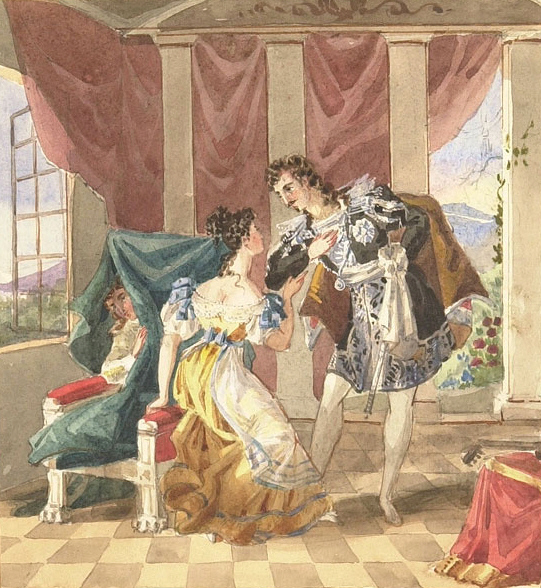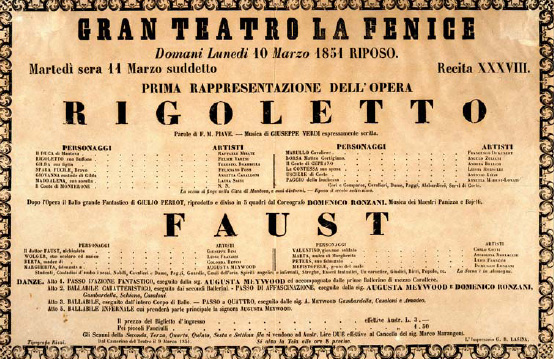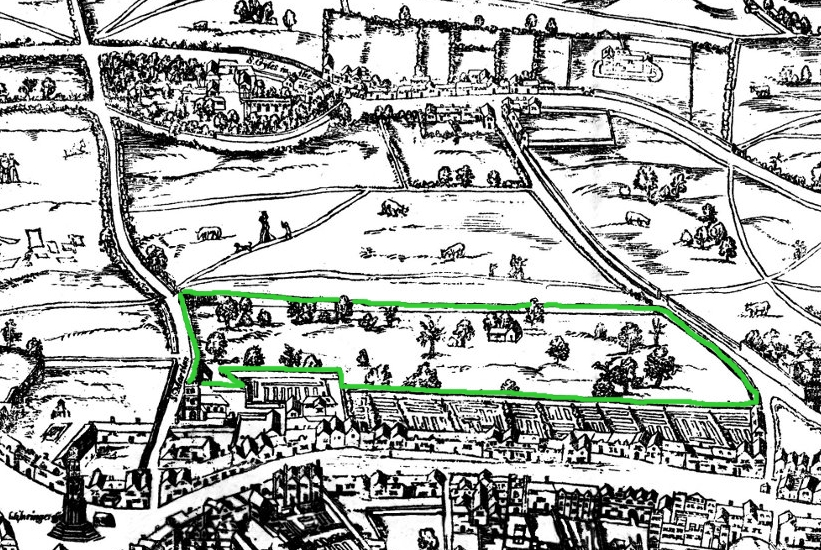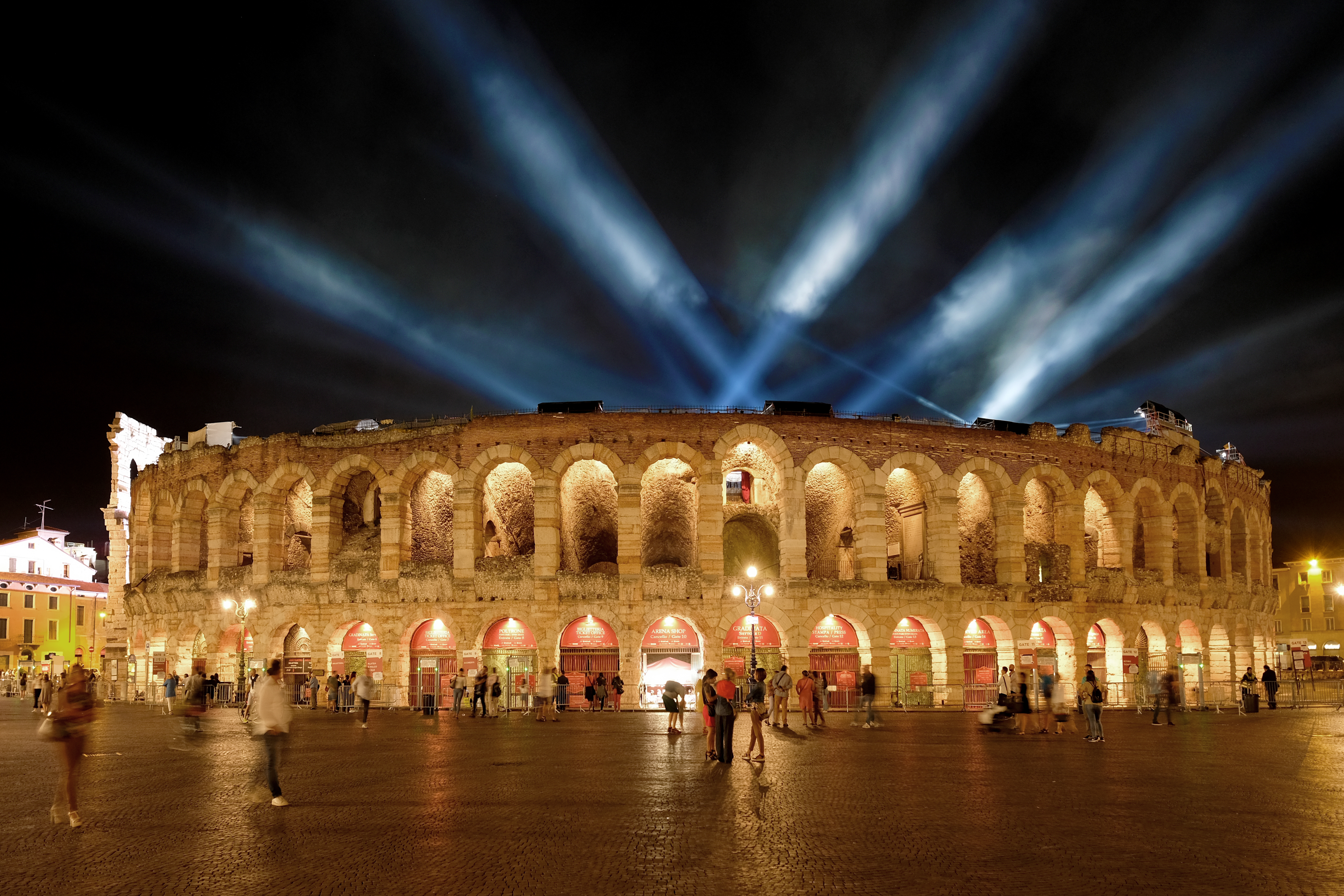|
Scipio Colombo
Scipio Colombo (25 May 1910 – 13 April 2002) was an Italian dramatic baritone, and was known for his abilities as a musician and singing-actor. Born in Vicenza, Italy, Colombo first studied philosophy at the University of Padua, before turning to music. He studied in Milan with Giuseppe Venturini and in Rome with Giuseppe de Luca, and made his debut in Alessandria, as Marcello in ''La bohème'', in 1937. Throughout World War II, he sang at most of the major opera houses of Italy, including the Teatro alla Scala. In 1947, he sang there in the Milan premiere of Prokofiev's ''The Love for Three Oranges'', and of Britten's ''Peter Grimes'', and later took part in the world premiere of Poulenc's ''Dialogues des Carmélites'', as the Marquis de la Force, in 1957. He also sang in Mussorgski's ''Khovantchina'', in 1949. He created roles in contemporary Italian works, notably in Dallapiccola's ''Il prigioniero'' (Florence, 1950), and Pizzetti's ''Cagliostro'' (La Scala, 1953). H ... [...More Info...] [...Related Items...] OR: [Wikipedia] [Google] [Baidu] |
Scipio Colombo
Scipio Colombo (25 May 1910 – 13 April 2002) was an Italian dramatic baritone, and was known for his abilities as a musician and singing-actor. Born in Vicenza, Italy, Colombo first studied philosophy at the University of Padua, before turning to music. He studied in Milan with Giuseppe Venturini and in Rome with Giuseppe de Luca, and made his debut in Alessandria, as Marcello in ''La bohème'', in 1937. Throughout World War II, he sang at most of the major opera houses of Italy, including the Teatro alla Scala. In 1947, he sang there in the Milan premiere of Prokofiev's ''The Love for Three Oranges'', and of Britten's ''Peter Grimes'', and later took part in the world premiere of Poulenc's ''Dialogues des Carmélites'', as the Marquis de la Force, in 1957. He also sang in Mussorgski's ''Khovantchina'', in 1949. He created roles in contemporary Italian works, notably in Dallapiccola's ''Il prigioniero'' (Florence, 1950), and Pizzetti's ''Cagliostro'' (La Scala, 1953). H ... [...More Info...] [...Related Items...] OR: [Wikipedia] [Google] [Baidu] |
Il Prigioniero
''Il prigioniero'' (''The Prisoner'') is an opera (originally a radio opera) in a prologue and one act, with music and libretto by Luigi Dallapiccola. The opera was first broadcast by the Italian radio station RAI on 1 December 1949. The work is based on the short story ''La torture par l'espérance'' ("Torture by Hope") from the collection ''Nouveaux contes cruels'' by the French writer Auguste Villiers de l'Isle-Adam and from ''La Légende d'Ulenspiegel et de Lamme Goedzak'' by Charles De Coster. Some of the musical material is based on Dallapiccola's earlier choral work on a similar theme, ''Canti di prigionia'' (1938). Dallapiccola composed ''Il prigioniero'' in the period of 1944–1948. The work contains seven parts and lasts about 50 minutes. The musical idiom is serialism, and it is one of the first completed operas using that compositional method. Performance history The opera's first stage performance was at the Teatro Comunale Florence on May 20, 1950. The performers wer ... [...More Info...] [...Related Items...] OR: [Wikipedia] [Google] [Baidu] |
Cosi Fan Tutte
Cosi, COSI or CoSi may refer to: * ''Così'', a 1992 play by Louis Nowra ** ''Cosi'' (film), 1996, based on the play * Così (restaurant), an American fast-casual restaurant chain * Compton Spectrometer and Imager, or COSI, a NASA telescope to be launched in 2025 * COSI (Center of Science and Industry), a science museum and research center in Columbus, Ohio, U.S. * COSI Toledo, now Imagination Station, a science museum in Toledo, Ohio, U.S. *Cobalt monosilicide, a material with the chemical formula CoSi * Julián Cosi (born 1998), an Argentine footballer * Valerio Cosi (born 1985), an Italian musician See also * * Così fan tutte (other) '' Così fan tutte'' is a 1790 Italian-language comic opera by Mozart. Così fan tutte or variations may also refer to: * ''Così fan tutte'' (film), or ''All Ladies Do It'', a 1992 Italian sex-comedy * ''Così fan tutte'' (TV series), an Italia ... * Così è (se vi pare) (other) {{disambiguation, surname ... [...More Info...] [...Related Items...] OR: [Wikipedia] [Google] [Baidu] |
Don Giovanni
''Don Giovanni'' (; K. 527; Vienna (1788) title: , literally ''The Rake Punished, or Don Giovanni'') is an opera in two acts with music by Wolfgang Amadeus Mozart to an Italian libretto by Lorenzo Da Ponte. Its subject is a centuries-old Spanish legend about a libertine as told by playwright Tirso de Molina in his 1630 play '' El burlador de Sevilla y convidado de piedra''. It is a ''dramma giocoso'' blending comedy, melodrama and supernatural elements (although the composer entered it into his catalogue simply as ''opera buffa''). It was premiered by the Prague Italian opera at the National Theater (of Bohemia), now called the Estates Theatre, on 29 October 1787. ''Don Giovanni'' is regarded as one of the greatest operas of all time and has proved a fruitful subject for commentary in its own right; critic Fiona Maddocks has described it as one of Mozart's "trio of masterpieces with librettos by Da Ponte". Composition and premiere The opera was commissioned after the succes ... [...More Info...] [...Related Items...] OR: [Wikipedia] [Google] [Baidu] |
Le Nozze Di Figaro
''The Marriage of Figaro'' ( it, Le nozze di Figaro, links=no, ), K. 492, is a ''commedia per musica'' (opera buffa) in four acts composed in 1786 by Wolfgang Amadeus Mozart, with an Italian libretto written by Lorenzo Da Ponte. It premiered at the Burgtheater in Vienna on 1 May 1786. The opera's libretto is based on the 1784 stage comedy by Pierre Beaumarchais, '' La folle journée, ou le Mariage de Figaro'' ("The Mad Day, or The Marriage of Figaro"). It tells how the servants Figaro and Susanna succeed in getting married, foiling the efforts of their philandering employer Count Almaviva to seduce Susanna and teaching him a lesson in fidelity. Considered one of the greatest operas ever written, it is a cornerstone of the repertoire and appears consistently among the top ten in the Operabase list of most frequently performed operas. In 2017, BBC News Magazine asked 172 opera singers to vote for the best operas ever written. ''The Marriage of Figaro'' came in first out of ... [...More Info...] [...Related Items...] OR: [Wikipedia] [Google] [Baidu] |
La Traviata
''La traviata'' (; ''The Fallen Woman'') is an opera in three acts by Giuseppe Verdi set to an Italian libretto by Francesco Maria Piave. It is based on ''La Dame aux camélias'' (1852), a play by Alexandre Dumas ''fils'' adapted from his own 1848 novel. The opera was originally titled ''Violetta'', after the main character. It was first performed on 6 March 1853 at La Fenice opera house in Venice. Piave and Verdi wanted to follow Dumas in giving the opera a contemporary setting, but the authorities at La Fenice insisted that it be set in the past, "c. 1700". It was not until the 1880s that the composer's and librettist's original wishes were carried out and " realistic" productions were staged. ''La traviata'' has become immensely popular and is among the most frequently performed of all operas. Composition history For Verdi, the years 1851 to 1853 were filled with operatic activity. First, he had agreed with the librettist Salvadore Cammarano on a subject for what would ... [...More Info...] [...Related Items...] OR: [Wikipedia] [Google] [Baidu] |
Il Trovatore
''Il trovatore'' ('The Troubadour') is an opera in four acts by Giuseppe Verdi to an Italian libretto largely written by Salvadore Cammarano, based on the play ''El trovador'' (1836) by Antonio García Gutiérrez. It was García Gutiérrez's most successful play, one which Verdi scholar Julian Budden describes as "a high flown, sprawling melodrama flamboyantly defiant of the Aristotelian unities, packed with all manner of fantastic and bizarre incident." The premiere took place at the Teatro Apollo in Rome on 19 January 1853, where it "began a victorious march throughout the operatic world," a success due to Verdi's work over the previous three years. It began with his January 1850 approach to Cammarano with the idea of ''Il trovatore''. There followed, slowly and with interruptions, the preparation of the libretto, first by Cammarano until his death in mid-1852 and then with the young librettist Leone Emanuele Bardare, which gave the composer the opportunity to propose signifi ... [...More Info...] [...Related Items...] OR: [Wikipedia] [Google] [Baidu] |
Rigoletto
''Rigoletto'' is an opera in three acts by Giuseppe Verdi. The Italian libretto was written by Francesco Maria Piave based on the 1832 play ''Le roi s'amuse'' by Victor Hugo. Despite serious initial problems with the Austrian censors who had control over northern Italian theatres at the time, the opera had a triumphant premiere at La Fenice in Venice on 11 March 1851. The work, Verdi's sixteenth in the genre, is widely considered to be the first of the operatic masterpieces of Verdi's middle-to-late career. Its tragic story revolves around the licentious Duchy of Mantua, Duke of Mantua, his hunch-backed court jester Rigoletto, and Rigoletto's daughter Gilda. The opera's original title, ''La maledizione'' (The Curse), refers to a curse placed on both the Duke and Rigoletto by a courtier whose daughter the Duke has seduced with Rigoletto's encouragement. The curse comes to fruition when Gilda falls in love with the Duke and sacrifices her life to save him from the assassin hired by ... [...More Info...] [...Related Items...] OR: [Wikipedia] [Google] [Baidu] |
Bregenz Festival
Bregenzer Festspiele (; Bregenz Festival) is a performing arts festival which is held every July and August in Bregenz in Vorarlberg (Austria). It features a large floating stage which is situated on Lake Constance. History The Festival became an international event in its first year 1946, one year after World War II. People from Germany, Switzerland and France came to the festival. Two stages were created out of floating barges. One barge for the Vienna Symphony Orchestra and the other barge for carrying stage structures. The Vienna Symphony Orchestra is the biggest contributor to the Festival. This orchestra has a performance spot every year since the beginning of the festival. They have their own stage area and other venues used thorough out the festival. Every year the orchestra has a different conductor for each piece because it is considered the conductors performance. Kornmarktplatz, vorarlberg museum is the venture they are using for the 2016 Festival. In 2001, the f ... [...More Info...] [...Related Items...] OR: [Wikipedia] [Google] [Baidu] |
Aix-en-Provence Festival
The Festival d'Aix-en-Provence is an annual international music festival which takes place each summer in Aix-en-Provence, principally in July. Devoted mainly to opera, it also includes concerts of orchestral, chamber, vocal and solo instrumental music. Establishment The first festival took place in July 1948. It was founded by Countess Lily Pastré, who covered the entire costs in 1948.Le Salon de Lily, Hommage à la Comtesse Pastré, mécène , Culture 13 , Culture 13 [...More Info...] [...Related Items...] OR: [Wikipedia] [Google] [Baidu] |
Covent Garden
Covent Garden is a district in London, on the eastern fringes of the West End, between St Martin's Lane and Drury Lane. It is associated with the former fruit-and-vegetable market in the central square, now a popular shopping and tourist site, and with the Royal Opera House, itself known as "Covent Garden". The district is divided by the main thoroughfare of Long Acre, north of which is given over to independent shops centred on Neal's Yard and Seven Dials, while the south contains the central square with its street performers and most of the historical buildings, theatres and entertainment facilities, including the London Transport Museum and the Theatre Royal, Drury Lane. The area was fields until briefly settled in the 7th century when it became the heart of the Anglo-Saxon trading town of Lundenwic, then abandoned at the end of the 9th century after which it returned to fields. By 1200 part of it had been walled off by the Abbot of Westminster Abbey for use as arable l ... [...More Info...] [...Related Items...] OR: [Wikipedia] [Google] [Baidu] |
Arena Di Verona
The Verona Arena ( it, Arena di Verona ) is a Roman amphitheatre in Piazza Bra in Verona, Italy built in 30 AD. It is still in use today and is internationally famous for the large-scale opera performances given there. It is one of the best preserved ancient structures of its kind. In ancient times, the arena's capacity was nearly 30,000 people. The stage for concerts and opera performances decreases the available places to a maximum of 22,000. It will be used as the Closing ceremony venue for the 2026 Winter Olympics and two weeks later will be used for the Opening Ceremony for the 2026 Winter Paralympics in Milan and Cortina d'Ampezzo. Amphitheatre The building itself was built in AD 30 on a site which was then beyond the city walls. The ''ludi'' (shows and games) staged there were so famous that spectators came from many other places, often far away, to witness them. The amphitheatre could host more than 30,000 spectators in ancient times. The round facade of the buil ... [...More Info...] [...Related Items...] OR: [Wikipedia] [Google] [Baidu] |








